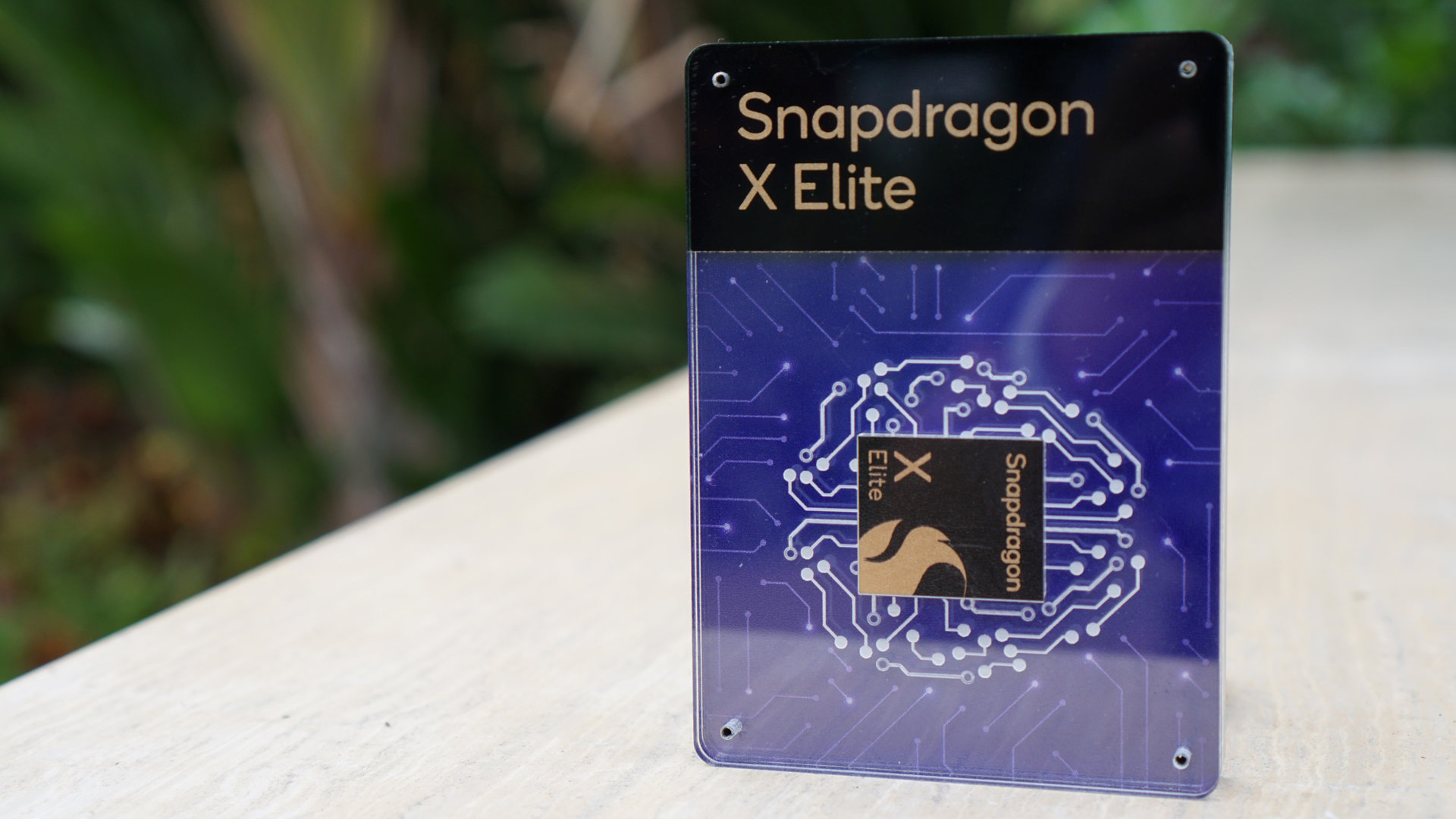Affiliate links on Android Authority may earn us a commission. Learn more.
We benchmarked the new Qualcomm Snapdragon X Elite laptop chip
Published onOctober 30, 2023
After years of development, Qualcomm’s first custom CPU architecture for laptops is here — the Snapdragon X Elite. The high-end laptop market is more competitive and varied than the mobile space, especially now that Apple has custom M1 and M2 silicon based on the Arm architecture, so Qualcomm has a job to do to stand out.
We grabbed some benchmarks at the Snapdragon Tech Summit to see how the X Elite compares. A few points of order before we get into the numbers, though. Qualcomm heavily managed the session — we could see the results running but weren’t allowed to run additional apps. Unfortunately, Qualcomm’s choice of tests (such as PCMark 10, Cinebench R24, and 3DMark’s Wildlife Extreme) aren’t widely used in the industry, making detailed comparisons a little complicated. But we’ve dug up the best results we can until we get our hands on the first laptop powered by an X Elite.
Snapdragon X Elite benchmarks
Qualcomm had two Snapdragon X Elite reference devices to test, spanning high-performance and lower-power use cases. Configuration A targeted an 80W total device TDP, running a QHD screen and 64GB RAM, while config B is a more power-efficient 23W implementation with a 2,800×1080 display and 64GB RAM. To compare, we scoured the web for results from the Apple M2 and M2 Max, along with Intel’s efficient 13th generation i7-1370P and high-end i9-13980HX.
First, the results we observed didn’t quite match Qualcomm’s touted Geekbench 6 single-core score of 3,227. Perhaps this is the peak potential of the core running without any constraints, but the chip appears to target a slightly lower performance point for the implementations we’ve seen. Still, the Oryon CPU is a solid match for the latest cores in its class, marginally exceeding its rival’s single-core capabilities within a similar TDP bracket. Oryon appears to deliver on its goals.
Multi-core is a bit of a different scenario. The Snapdragon X Elite has 12 CPU cores in both configurations, which obviously gives it an advantage over the lower TDP Apple M2, which has just eight cores. The Intel i7-1370P has six high-performance cores and eight efficiency cores, which don’t seem to be a match for 12 more powerful CPUs. Impressively, the X Elite boasts a lower TDP here too.
The Apple M2 Max has 12 powerhouse cores, resulting in a more comparable score to the X Elite. Intel’s i9-13980HX fires up eight performance cores and 16 efficient cores when running flat out, with the sheer core count giving it an advantage in heavily threaded workloads. The bottom line is that you’ll need a higher core count Intel chip to keep up with the X Elite.
We’ll reserve judgment on power until we see retail devices, but Qualcomm claims it can hit these high-performance marks at a fraction of the power of its rivals. If true, that’s obviously hugely promising from a battery life standpoint.
Graphics-wise, Qualcomm never positioned the Snapdragon X Elite as a gaming chip, but 3DMark’s Wildlife Extreme still clocks in around the same level as the Apple M2, which can handle some older AAA titles at playable frame rates. A higher power point doesn’t move the needle much for Qualcomm’s GPU score, which falls far behind the Apple M2 Max and its massive graphics silicon footprint.
Snapdragon X Elite performance potential

It’s early days for the Snapdragon X Elite, and with only a limited selection of benchmarks under our belt, we don’t want to draw too many conclusions before we see commercial laptops. But if we can identify one trend, the X Elite looks promising for lower-TDP notebooks. It’s pretty impressive that there isn’t a huge performance differential between the 23W and 80W versions Qualcomm showcases.
The 80W implementation is less likely to catch on, given it’s bested by the M2 Max and Intel’s highest-end 13-gen chips in graphics and multi-threading, respectively. Not to mention that a nearly 2.5x increase in power nets a much lower 9-20% gain in multi-threaded performance. However, Apple M2-levels of performance or greater on a lower power budget than Intel chips is a much more tempting prospect. A Snapdragon X Elite in a 30-50W TDP could be very compelling.
Even so, there are a few unknowns that will determine whether X Elite takes off. The pool of native Arm software running on Windows is deeper than ever (the list now includes Adobe Lightroom and Visual Studio). Still, plenty of legacy apps will see a performance dent from running on a translation later. Either way, price will probably be the biggest sticking point. Qualcomm has historically charged a premium for its best-in-class networking and AI features, and we imagine high-end performance will only add to the price tag.